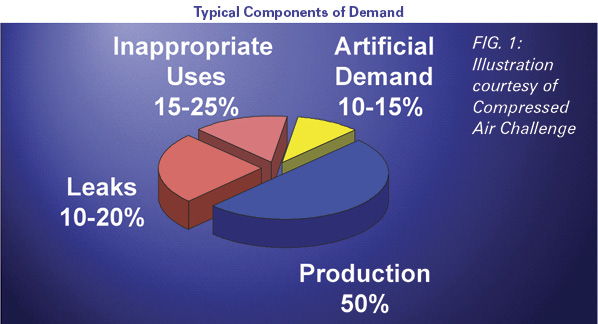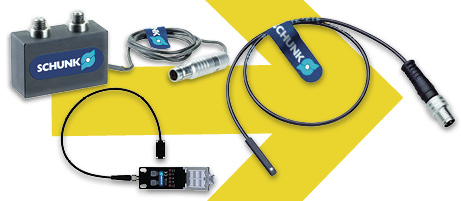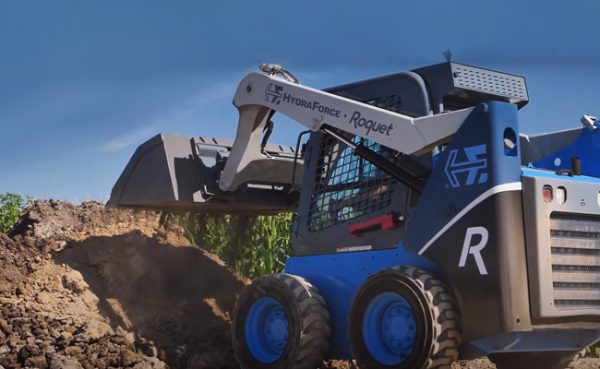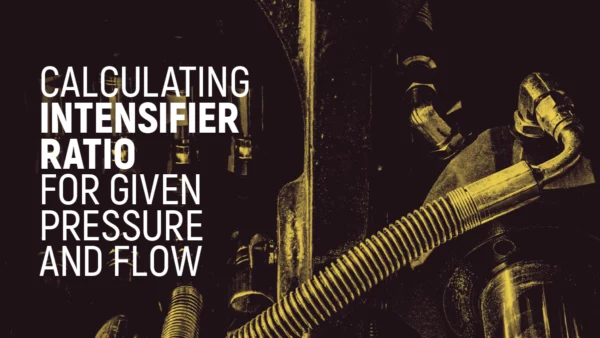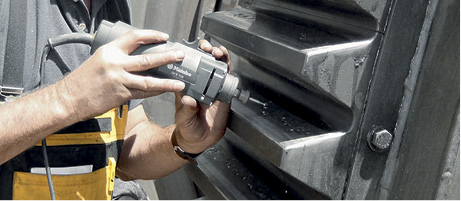Beyond Viscosity

Balancing Performance in Modern Hydraulic Fluid Formulations
Viscosity is not the only important factor to consider when either formulating or choosing a fluid for your hydraulic application. This article will examine the impact of viscosity on efficiency and machine performance, as well as many other factors that make up a high-performance hydraulic fluid.
By Shubhamita Basu, Ph.D., OEM Manager, Lubrizol,
and Jared Cornett, Product Manager, Industrial Oils, Lubrizol
Hydraulic fluid is essential for the proper functioning of mobile and industrial equipment around the world. The right fluid can better enable hydraulic machines to function as intended, with precision, optimal efficiency, and lower total cost of ownership (TCO) for operators.
However, not all hydraulic fluids are created equal. There are many factors to consider when formulating or selecting an optimal hydraulic fluid for any given fluid power application. Original equipment manufacturers (OEMs) and end users alike depend on high-performance fluids to help maximize machine performance, requiring fluids to deliver on the needs of a variety of different applications. Meanwhile, a working understanding of the characteristics that make up a high-performance fluid can empower end users to make the right choice for their needs every time.
So, what goes into a high-performance hydraulic fluid? It’s not uncommon for end users to focus on the viscosity index (VI) as the key performance indicator while selecting a hydraulic fluid. But the truth is that high performance goes far beyond just VI, and understanding the performance attributes of hydraulic fluids can be beneficial for OEMs, fluid marketers, and end users alike. This article will examine the required performance characteristics of modern, high-performance fluids and how they can help optimize today’s hydraulic equipment.
Viscosity
A Breakdown
Viscosity is an important characteristic of a hydraulic fluid and is a fluid’s resistance to flow. It is important to follow the OEM viscosity recommendation when selecting the hydraulic fluid for optimum performance.
Hydraulic fluids are commonly available in a wide variety of viscosity grades, in both monograde and multigrade options. Multigrade hydraulic fluids are formulated with special performance polymers called viscosity modifiers (VM). Multigrade fluids allow equipment to operate under wider operating temperatures and have higher VI than monograde fluids. While monograde fluids make up the majority of the hydraulic fluids in the marketplace, end users are increasingly adopting multigrade fluids for performance benefits.
Selection of the type of VM is paramount to have the optimum performance and high efficiency. But it’s important to understand the different ways in which viscosity impacts operational efficiency, which can be broken down into two categories:
Mechanical efficiency is inversely proportional to the viscosity of the fluid. For example, a very high-viscosity fluid can contribute to higher levels of friction and poor flow, leading to sluggish machine operation. By contrast, optimal viscosity as recommended by the OEM can help decrease friction and improve flow, enabling more accurate and efficient operation.
Volumetric efficiency is directly proportional to the viscosity of the fluid. Volumetric efficiency decreases as fluid viscosity drops at higher temperatures. Additionally, a fluid that is too thin may leak through seals, creating excess waste and a greater potential for wear on parts.
These factors demonstrate the importance of fluid selection to improve total system efficiency and the need to have a balance in fluid formulation, which can be achieved by utilizing the right VM. It is important to note that not all VMs are created equal. Shear stability is a key property used by formulators to select the right VMs as fluids formulated with shear-stable VMs offer durability, machine uptime, and peace of mind. Additionally, in-service hydraulic fluids must retain optimum viscosity under a wide operating temperature window to show consistent performance.
Beyond Viscosity
Equally Important Performance Characteristics
VI of a fluid is a unitless measure of the change in viscosity with temperature. Higher VI fluids show minimal change in viscosity with temperature and vice versa. High VI hydraulic fluids are often considered to be more efficient and overall higher performing compared to their lower VI counterparts. However, VI alone can’t predict the performance or operating efficiency of a hydraulic fluid; there are other critical properties listed below that need to be considered as well.
Wear Resistance. Antiwear components present in hydraulic fluids form a protective film on metal surfaces to prevent wear. Strong wear resistance is essential to maintain the durability of parts and extend the life of the equipment.
Oxidation stability. High-performing hydraulic fluids are formulated with antioxidants that can withstand chemical reactions induced by heat in the presence of oxygen. Hydraulic fluids with outstanding oxidation stability can increase the in-service life of the fluid and thereby reduce the TCO.
Thermal stability. Thermal stability is a fluid’s ability to resist breakdown when exposed to elevated temperatures for an extended period. Poor thermal stability can result in accelerated decomposition of additive components leading to sludge and varnish formation, which can clog filters, disrupt fluid flow, and increase downtime. High-performing fluids are typically formulated to show high degrees of thermal stability.
Hydrolytic stability. One of the most common contaminants in hydraulic equipment is water. Acids can form when hydraulic fluid is exposed to water, leading to rust and corrosion as well as sludge formation – all of which can be damaging for the hydraulic equipment. Hydraulic fluids with exceptional hydraulic stability can withstand such hydrolysis and increase uptime by protecting the equipment.
Demulsibility. Water entering the hydraulic system needs to be separated and drained out for the optimal performance of the system. High-performing hydraulic fluids are formulated with special additives called demulsifiers that can facilitate the separation of water and keep the fluid emulsion-free.
Rust and corrosion protection. As mentioned before, water ingress into a hydraulic system can lead to rust and corrosion over time. Hydraulic fluids need to be formulated with additives to prevent rust and corrosion to ensure the protection of the parts.
Foam inhibition. Entrained air entering the circuit through the reservoir or air leaks within the system can lead to foaming. Fluids under high pressure may contain larger volumes of dispersed air bubbles, which expand and produce foam once the system is depressurized. Because foam is highly compressible, it can seriously affect the operation and lubrication of machinery, making foam inhibitors a key component of the formulation.
Compressibility. The compressibility of a hydraulic fluid is the measure of volume reduction under pressure. Typically, hydraulic fluids are incompressible, however, slight volume reductions can occur under higher pressures. In high-pressure systems, compressibility increases with pressure and temperature and can lead to servo valve failure, efficiency loss, and cavitation—problems that can eventually lead to machine failure and downtime. Therefore, hydraulic fluids need to have low compressibility.
Filterability. Filtration systems in any hydraulic equipment play a crucial role in maintaining uptime by filtering contaminants and keeping the system clean. Water ingress can lead to sludge formation which in effect can block filters and prevent the system from performing optimally. Hydraulic fluids need to be formulated to keep the filtration system clean allowing seamless performance of critical system components.
Elastomer (Seal) compatibility. Most hydraulic systems utilize different types of elastomers specified by the OEMs that help minimize or prevent fluid leakage. Hydraulic fluids that are not compatible with elastomers can end up swelling the seals preventing proper functioning of the equipment. Additionally, seals may undergo chemical reactions under higher temperatures leading to leaks. To prevent this, high-performing hydraulic fluids should be formulated to be compatible with different types of elastomer materials as guided by the OEM specifications.
A high-performance hydraulic fluid balances all these properties along with the desired VI to offer the optimum performance to reduce downtime and TCO.
As we’ve explored, there is a wide variety of performance characteristics that modern hydraulic fluids must provide to enable today’s equipment to meet its full potential. And of course, balanced viscosity properties remain a necessary contribution to optimal machine performance.
To deliver on these needs, hydraulic fluid marketers must select the right additive chemistry for balanced performance, and the right additive partner can help you do that. For end users, a working understanding of these characteristics can help you better select high-performance hydraulic fluids to help enhance your operations, minimize downtime, and lower the total cost of ownership for your critical machines.


